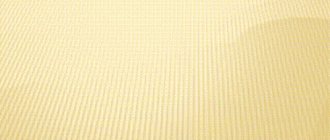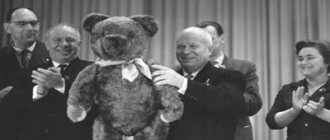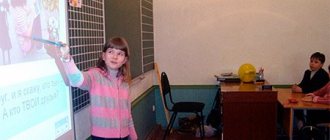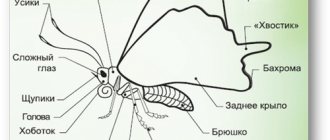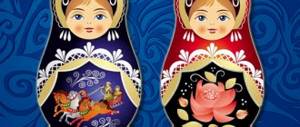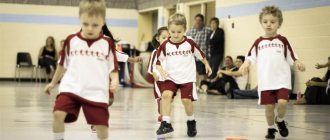Historical data on cartoons
It is not known exactly when cartoons appeared. Since ancient times, people have tried to “revive” drawings. The first mentions of animation (animation) date back to the 1st century BC.
At the beginning of the second millennium AD. Shadow performances appeared in China. They were very similar to future cartoons.
In the middle of the 15th century, artists began to appear who entertained people with moving images, using special mechanisms for this.
At the end of the 17th century, A. Kisher invented a “magic lantern” that showed a moving image on glass.
At the end of the 19th century, the inventor from France E. Reynaud came up with a projector that used the principle of sequential transmission of images - one after another.
In 1906, after the movie camera was invented, the first cartoon was made in America. Its author was J. Blackton. Early cartoons were black and white and silent. The first cartoon with sound was created in 1928 by W. Disney. It was the cartoon "Steamboat Wiley".
In our country, the first animated film appeared in 1924.
How are cartoons made?
Cartoons make us rejoice, laugh, wonder, and empathize. There is probably not a single child who does not watch and love cartoons. But has everyone thought about how they are created? How do characters come to life? Who creates your favorite characters and how? What are the secrets of creating cartoons? This article reveals the secret of creating cartoons at home. The study is based on direct observation of the creation of cartoons by V.D. Kruglov and FKI students, as well as on the basis of practical experience - the creation of their own animated film.
Keywords: animation, hand-drawn, sand, computer, puppet animation, computer programs VirtualDub, Photoshop, Ulead videostudio.
The topic of the study is relevant; every child’s childhood is unthinkable without good and beloved cartoons. They teach us: that we need to be kind to people and animals around us; that elders must be treated with respect; how to value friends; that in the world there is not only good, but also evil that needs to be fought. The purpose of the study is to study the process of creating a cartoon. Research objectives : study different types of cartoons; get acquainted with the materials and technical means necessary to create a cartoon; create cartoon characters; empirically identify techniques for “revitalizing” a character (filming and dubbing an animated film). Hypothesis - if you discover the secrets of creating cartoons, then each of the children will be able to create their own cartoon at home. The object of research is animation. The subject of the study is the process of creating an animated film. Research methods : research, search. From the history of animation. When exploring any topic, it is impossible not to look at the pages of history and get acquainted with the historical aspect. Emile Reynaud is considered to be the first animator. At the end of the 19th century, he invented and introduced the praxinoscope projector to the public. October 28, 1892 is the day and is considered the birthday of animated cinema. Animation has come a long way in its development, spanning more than 100 years, and in 1936, the Soyuzmultfilm animation studio was organized in our country, several generations grew up on its wonderful cartoons. Types of animated films. Hand-drawn animation. The very first cartoons were made using this technique. Dmitry voiced the main character of the hand-drawn cartoon “The Little Prince” (authors: a group of students of the SGSPU Department of Fine Arts, DPI). Sand animation . A relatively new animation technology. To create it, you need a table with lighting, a projector, and a screen. It uses any bulk material; sand, sugar or coffee. The main tool in creating such a cartoon is the artist’s palms and fingers. Computer animation . The computer speeds up and makes it easier for an animator to work on a cartoon. Thanks to developers, there are several types of computer programs designed for creating animated films. Puppet animation. It appeared in Russia in 1906. Vladimir Dmitrievich Kruglov (Dima’s grandfather) is interested in puppet animation. When creating hand-drawn and puppet cartoons, one method is used - time-lapse photography. Imagine what a labor-intensive process this is: if a cartoon runs for only ten minutes at a speed of 24 frames per second, then it needs to shoot more than 14 thousand frames - which means drawing more than 14 thousand drawings and shooting more than 14 thousand frames changing the positions and movements of the characters . This is a lot of hard work. Materials and technical means for creating a cartoon. To create a cartoon of any kind, first of all, you need the ability to create! You will need a photo and video camera for time-lapse photography and for shooting small videos, a tripod, and lighting equipment. A computer and knowledge of programs for processing frames and editing a story are required. Creation of a cartoon. Having learned the secrets of animation and tried his hand as a decorator, animator, and taking part in the dubbing of a cartoon, Dima created his cartoon “Mixopolis” using Lego figures. He created his heroes, Mixels, according to instructions. It is possible to revive my characters, give them a voice, and add musical accompaniment using the programs VirtualDub, Photoshop, Ulead videostudio, etc. In order for the characters’ movements to be smooth, in professional cartoons you need to take at least 24 frames for 1 second of viewing. It turned out to be an interesting cartoon lasting 12 minutes. Summing up the results of the creative and research project, we can definitely say that creating cartoons with your own hands is not only interesting, but also useful. Although this is a long and laborious process, it can teach you a lot. It helps to develop imagination, imagination, teaches to be patient, assiduous and consistent. The research hypothesis was confirmed. Having revealed some secrets in creating animation and demonstrating his original animated film to his classmates, Dima interested them in creating a cartoon. The possibilities of modern animation are endless. Everyone can put a little effort into creating their own cartoon at home. Success depends on the aspirations and fantasies of the author!
Literature:
- Belousov Yu.A. I'm exploring the world. Children's encyclopedia. "Movie". – M.: Astrel Publishing House, Olympus, 2000.
- How to create your own cartoon. Simon M. – NT Press, 2006. – 337 p.
- Shergin V.S., Yuryev A.I. What's happened? Who it? Children's encyclopedia. T.2. – M.: AST, 2007.
The practical stage of creating a cartoon. Photographing
Using the application downloaded for free to an iPhone with the iOS system software “Puppet Animation”, time-lapse photography of the cartoon characters was made in the agreed upon scenery. In the settings of this program it is possible to edit each frame: enlarge, change color and texture, replace the background and much more. I didn’t use many of the functions because they require a constant monthly payment, but even in the “free mode” you can implement your ideas.
Film scoring and editing
To dub your cartoon, you can use any sound recording equipment: voice recorder, telephone, etc.
Here, the most important thing is to make a script, maintain the necessary pauses when moving from scene to scene and change the voice for your characters (you can invite friends for such an important matter).
When creating my cartoon, I used the Iphone voice recorder in the Puppet Animation application. It was very difficult for me to complete the dubbing for the frame order, but my older sister helped me and the idea for the cartoon came to an end.
The film speed is chosen to be 00:33 frames per second from 00:02 frames per second, which indicates that the frames are played slowly so that the “voice-over” matches the pictures, and the scenes must follow each other clearly. After all, the audience's perception of the film depends on this. You can use music and various sounds. Titles and so on.
Advice: carefully familiarize yourself with the movie creation program that is installed on your computer and use all its capabilities.
How to make your own animated series in ideal conditions?
How is a cartoon created? From idea to TV launch
Animation is magic!
Today we want to talk about the production of an animated series, the path a cartoon takes from idea to launch on television. But let’s make a reservation right away: productions at different studios may differ. We will show a generalized path, a “typical” pipeline.
In CG pipeline, the process of processing a script into a 2D/3D picture or video.
Idea
Whether you come up with an original story, adapt ready-made material, or do a remake, there is always one (maybe several) person at the origins who tells the idea to the TV channel or studio management. And they, in turn, decide whether to put it into production.
This usually happens in a presentation format that best illustrates your idea. In the industry, it is called the “pitch bible” and includes: the plot, character characteristics, topics that you will cover, examples of similar projects.
Pitch Bible
Pilot
Let’s say (we are considering ideal conditions!), the idea was taken into development.
Congratulations! Now you are the showrunner - the creator of the project who is responsible for everything!
The first trial episode (pilot) is relatively low-cost, so you can “test” errors and identify problems in order to find the most effective option for creating a cartoon. This is why pilots often differ from the final versions.
For testing, a pilot can be posted on the Internet, aired at night, and sometimes no one else except the studio team will ever see it.
Pilot characters compared to final design
Pre-production Scenario
What is important at this stage? Creating a general story and outlining future plot turning points - just write down an outline for several episodes.
Outline is an “external line”, a draft, an outline for conveying meaning without specifics.
The images of the characters, their motivation and characteristics have already appeared at the pitching stage. Now you need to think through the interaction with other characters and plot moves. Will someone find great love? Or will the villain repent and take the side of good?
Production Search for like-minded people
Now let's recruit a team! Who will work on the project? Here the cards are in the hands of the showrunner! Script writers, background artists, color stylists, storyboarders, animators - these people will work with you. Find those you can trust, and most importantly, they should be professional.
Animated series produced by:
• along the path “from the storyboard”
Screenwriters write outlines that are passed on to storyboarders. And they work through the episode, write dialogues, act out scenes and create something similar to a comic book.
• or “from the script”
The writers develop the episode in detail, adding dialogue and action. Storyboarders receive a ready-made script and draw storyboards based on it, without coming up with lines or thinking about the behavior of the characters. This is how The Simpsons and Rick and Morty are created.
This is how they work at PIXAR studio
Storyboard and animatic
A storyboard (storyboard) is a sequence of images that reflect the key phases of the development of events and the main characters.
Artists create quick drawings that are needed to indicate where a character is in the frame, without worrying about the depiction and background.
A storyboard consists of sequences, scenes and panels.
• Sequence is a part of an episode that takes place in one location or tells one idea.
• Inside, the sequence is divided into scenes (shots). The scene consists of one shot, as soon as the angle changes, it means a new scene has begun.
• Inside, the shots are divided into panels - single designs.
When the storyboard is ready, it is presented to the team. For the first time, only the showrunner and writers watch it and give comments and corrections. The second time they show the result of the final rendering.
Storyboard
An animatic (previsualization) is the same storyboard, but compiled into a video format with the timing required for action and sound. Here, moments are identified when it is necessary to add additional poses, and sometimes even entire shots, which are necessary for proper editing. An animatic helps to visualize the episode.
Employees of the animation studio "Parovoz" at work
Voice acting
After the storyboard is ready and the lines are “smoothed” and accepted by the team, it’s time to record the actors and dub the episode. Good voice acting will make even a boring plot interesting, but bad voice acting will ruin the best script. Therefore, this stage must be approached with special care. Real acting is important here.
How to voice the cartoon "The Lion King"
At the same stage, the composer gets involved and begins to write musical accompaniment based on the working edit.
Characters
Typically, a character designer takes a drawing from a storyboard and, drawing it, brings it to a full-fledged model. And also does pose design.
Then the finished options are given to 3D modelers, who model 3D characters. They sculpt what fills the frame, give shape and volume, draw proportions from different angles: full face, profile, 3/4 and from each viewing angle.
After this, the models are given to texture designers to draw textures and create a material map: character skin color, shades, textures, and then move on to rigging.
Rigging is the process of creating a skeleton and control points for a 3D model, with the help of which character poses and animation are created.
All these people need to keep the spirit of the original characters, but at the same time make them more attractive.
This is what famous characters looked like in the early stages of production
Location design
Here the artists design and paint the backgrounds.
Colorists create color palettes for characters and effects within a scene based on lighting conditions.
Different palette of candlesticks depending on lighting conditions in the film “Beauty and the Beast”
At the same time, special effects (VFX) specialists begin creating dust, smoke, fire, water and other particle effects.
Every object the character touches must be designed. Lots of work!
The process is structured so that the end of one stage is the beginning of the next. They can also be layered on top of each other.
Layout (scene assembly)
Layout is the first stage of assembling a scene in 3D, where the frame is composed, the camera and characters are positioned. At this stage, the movements of the heroes are indicated.
This is one of the main stages, as characters, decorations, and objects are exhibited at the location. Layout is the final “draft” version of the cartoon.
Layout using the example of the cartoon “Minions”
Animation
Artists who have already created models with a ready-made rig give them to animators, who proceed directly to animating the characters.
The animators are sent storyboards, model sheets (images of the character's facial expressions and poses), references, etc. - everything they need to make high-quality animation of the episode and get an accurate understanding of the plot.
The finished character animation with the environment is sent to the visualization department, where, using a renderer, rendering passes are obtained, which are then passed on for final compositing.
Character emotion map for an animator
Post-production Compositing
Everything that was done in the previous stages is put together to form a complete picture. Here color correction takes place, effects are added (snow, rain, etc.), and minor corrections are made.
Sound mixing
The real magic comes with the voice acting of the dialogue. Now it’s time to mix the rest of the sound: from many different options you need to choose one that is most suitable.
Mixing is the process of combining music, voices and sound effects so that the volume and overall sound work in accordance with the picture.
Editing (final directing)
In 8 cases out of 10, only those moments that are priority for the plot, important jokes, or mistakes that cannot be left are corrected.
Marketing Once the team has finished working on an episode, they have virtually no influence on when the cartoon will be shown on screen and in the market. This is where marketers, advertisers and producers come into play.
The process of creating an animated series is a precise coordinated work of many people who give us amazing moments alone with the fantastic world of the cartoon.
We hope that we have at least lifted the curtain a little on how animated series are created, and maybe we have become so interested that you will want to produce them yourself. Perhaps your project will repeat the success of the TV series “Smeshariki”, “Luntik” and “Masha and the Bear”.
Ask questions if you want to know anything else, because CGAim teachers work on creating animated series every day.
See you later☺
